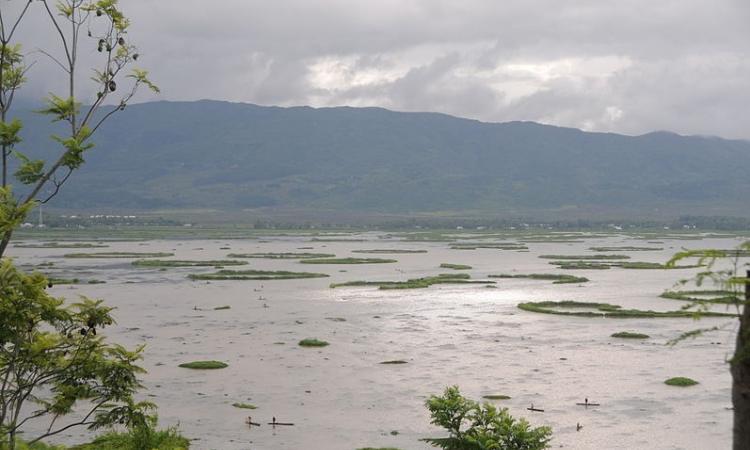
The Loktak lake in Manipur is the largest freshwater lake in Northeast India. It is famous for the phumdis, which are isolated collections of heterogenous masses of vegetation, soil, and organic matter at various stages of decomposition, floating over it [1]. It is referred to as the only floating lake in the world because of the phumdis [2]. The lake plays an important role in the economy of Manipur and is a source of water for hydropower generation, irrigation and drinking water supply. The lake is also a source of livelihood for the rural fisherman who live in the surrounding areas and on phumdis, also known as “phumshongs”[1].
Recent threats to the lake
There are 55 rural and urban hamlets around the lake with a population of about 100,000. The lake was designated as a wetland of international importance under the Ramsar Convention on March 23, 1990, taking into consideration its ecological status and its biodiversity values. It has recently been listed under the Montreux Record on June 16, 1993, which identifies sites that are undergoing ecological changes and are under threat due to technological changes, pollution or human activity [1, 3]. The Loktak lake can be considered as a sub-basin of the Manipur River basin. It has a direct catchment area of 980 sq.km and indirect catchment area of 7157 sq.km [1].
The paper titled 'Water quality status of the Loktak lake Manipur, North East India and the need for conservation measures - A study on five selected villages' published in the International Journal of Scientific and Research Publications, informs that the lake provides livelihood to the settlements around it in the form of fishing, agriculture and collection of vegetables etc.
A large number of people living in the villages around the lake use this water for drinking and other domestic purposes. However, urbanisation has taken its toll and it has been found that the lake is becoming increasingly polluted because of municipal waste, fertilisers and pesticides used in agriculture, and human activities such as bathing and washing of clothes and utensils.
Study evaluating the water quality status of the lake
The paper presents the findings of a study that evaluated the water quality of the lake to know the extent of pollution so that future pollution could be avoided. The study assessed the physico-chemical variables of Loktak lake at the five lakeshore villages of Phoubakchao, Laphupat Tera, Nongmaikhong, Ithing and Karang. The villages were selected considering their dependency on the lake resources. For the study, water samples were collected for physico-chemical analysis from these five sites every month over a period of one year.
A total of eleven parameters were monitored including temperature, surface water temperature, pH, Dissolved Oxygen (DO), Biological Oxygen Demand (BOD), Free Co2, Total Dissolved Solids (TDS), alkalinity, conductivity and light penetration.
Findings of the study
Among the eleven parameters analysed across five sites, it was found that the physico-chemical properties of DO and BOD were above the WHO standard limit due to discharge of municipal sewage, domestic wastes, fertilisers and pesticides from agricultural practices, which disturbed the ecology of the Loktak lake and the potable nature of the water. The study concluded that the water of the Loktak lake was becoming increasingly polluted and that this needed to be controlled to prevent further pollution and spreading of water-borne diseases.
The paper ends by making the following suggestions:
- Pollution due to various anthropogenic activities in the lake needs to be checked, and awareness regarding the conservation of the lake has to be generated.
- Although Loktak Development Authority (LDA) is involved in managing the ecological status of the lake, community participation is needed to prevent further degradation.
References
1. Wikipedia (2015) Harike Wetland. Downloaded from the site on the 8th of March 2015.
2. Incredible India (2015) Loktak Lake. Downloaded from the website on 23rd February 2015.
3. IAS planner (2015) What is the Montreux Record? List any eight ‘Ramsar’ wetland sites in India. Downloaded from the website on 23rd February 2015.
/articles/worlds-only-floating-freshwater-lake-under-threat